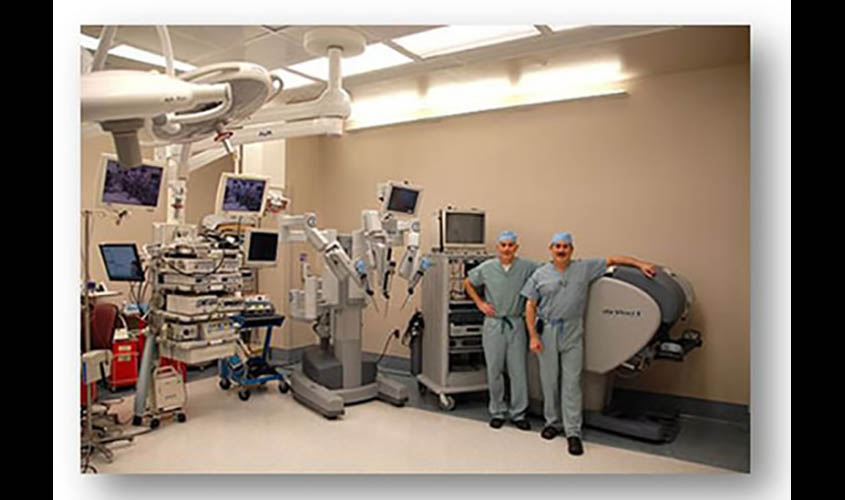An incision-less robot-assisted surgery for early stage head, neck and throat cancer (oropharyngeal carcinoma caused by tobacco consumption) has made inroads in India and has been presented as a “more effective” and “painless” alternative to chemotherapy and radiation by oncologists (a medical practitioner who diagnoses and treats tumors) and medical experts. Known as trans-oral robotic surgery (TORS), the procedure helps remove certain tumors from inaccessible areas in the neck and throat by strategically placing an arm of the robot inside the mouth of the patient. The surgery provides an option to remove tumors without any visible scarring, whilst preserving the patient’s speech and his ability to swallow and eat, experts say.
‘Minimally Invasive’
“Conventional surgeries to remove oral tumors often require long incisions through jaw and throat. But with TORS, which is a minimal invasive surgery, the damage to face or vocal cord is almost negligible. There is no blood loss and the patient rarely develops any cases of infections and complications. The 20-minute surgery is precise and intricate in execution, and ensures that the patient doesn’t lose his ability to speech or eat,” Dr Surender Dabas, Director, Head, Neck and Thorax Surgical Oncology, Fortis Memorial Research Institute, who has conducted over 500 such surgeries since 2013, told The Sunday Guardian. According to a study piloted by Dr Dabas on the 57 patients suffering from early stage head and neck cancer between 2103 and 2105, the cure rate was close to 80%, i.e., 80% of these patients had their successfully removed without any reports of recurrence till now. According to Dr Ashok Chenoy, senior consultant and oncologist at Kidwai Memorial Institute, a government hospital to have recently forayed into the field of robotic surgeries, TORS results in a faster recovery, with the patient being able to speak and eat properly within two to three days of the surgery.
On the other hand, radiation, chemotherapy and the traditional method of incision that requires cutting of the jaw bone, come with several side effects like loss of speech, permanent damage to teeth, facial distortions and health deterioration.
The two patients who underwent TORS at FMRI recently explained to The Sunday Guardian how the surgery turned out to be a boon for them. One of them was a 59-year-old man who was diagnosed with stage one throat cancer in 2014. It was only after 35 painful and unsuccessful radiation and chemotherapy sessions at a private hospital, which went on for seven weeks, did he go for TORS on a relative’s suggestion in April this year. Another patient, a 76-year-old man suffering from cancer of the larynx (voice box), was given the option of radiation by all the doctors until a relative practising medicine in the UK recommended robotic surgery. Both the patients said there were no functional impairments to speech and swallowing, and the recovery time was remarkably minimal.
Despite the procedure being deemed a more effective way to treat oral cancer, and being touted by many an expert to take over the conventional surgical methods in a few years, there are flip sides to it, which is why the method hasn’t been widely adopted yet.
The Downside
Oncologists at AIIMS, one of the 26 medical institutes (private and government) in India where TORS has taken place, say that the procedure is effective only for early stage non-cancerous tumors and small-sized cancerous tumors.“It is not viable to resort to TORS because it is used mainly for cancers at the base of the tongue. More complicated tumors in other areas of head and neck can’t be completely removed with this method alone; radiation and chemotherapy are indispensible in such cases. Also, even while the recovery rate is good, it doesn’t ensure a zero recurrence rate,” Dr Amit, oncologist, AIIMS, said.
Secondly, one robotic machine costs around Rs 16 crore, and the cost of treatment at private hospitals comes between Rs 2.5 lakh and Rs 5 lakh.“With the just 1.16% of the GDP allocated to healthcare in India, government hospitals can’t afford the machine. Private hospitals can, but then the poor would not be able to afford the treatment. Even when some government hospitals do have the machine, it is not top-end,” Dr Ashok Chenoy said.
Third, surgeons are required to be extensively trained in handling the robot. However, most of the training centres are located abroad. “Location of training centres is a deterrent, especially in public hospitals, where the onus is on the government to send doctors abroad. It is again a highly expensive process, and hence, is not encouraged much,” Dr Chenoy added. Some hospitals, Dr Dabas said, do have the robot, but there are no trained surgeons to operate them.
According to Dr Dabas, the “trend” has always been to go for radiation and chemo to treat all kinds of cancers, and that many doctors are not open to new methods and technologies that might disrupt the trend.
Despite all the roadblocks, oncologists are hopeful that the process, which is in the pick-up phase right now, might gather pace and relevance in the next five to six years.

